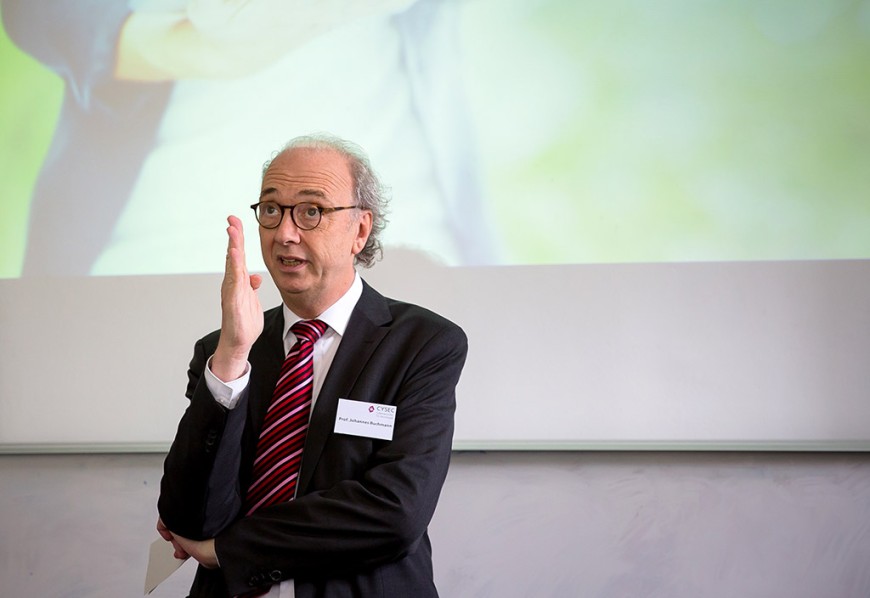A recipe against the power of the quantum computers
Signature method from Darmstadt could soon secure updates worldwide
2018/06/11 by Christian J. Meier
A method for digital signatures that is secure against quantum computers has been developed by a team from TU Darmstadt led by Professor Johannes Buchmann and is now a general Internet standard.

Dramatic progress in the development of quantum computers is causing concern about the future security of the Internet for these ultrafast processors could crack standard codes and digital signatures in no time at all. Worldwide researchers are therefore developing new security procedures that are intended to be immune against an attack from a quantum computer, so-called post-quantum cryptography.
A post-quantum method developed at TU Darmstadt is now ready for worldwide application. The last obstacle to its general use in the Internet, the IETF specification (Internet Engineering Task Force; an international body dealing with the technical further development of the Internet), has now been overcome by the method called XMSS (eXtended Merkle Signature Scheme) developed by the team led by Professor Johannes Buchmann.
“Without secure digital signatures, the Internet would have to be shut down”, Buchmann stressed the importance of this proof of authorship. In the case of updates, for example, digital signatures ensure that the new software has not been changed and that you do not get a malicious trojan instead of a virus scanner update.
Methods used hitherto have been based on complex mathematical problems that can be cracked in billions of years by standard computers but in a matter of minutes by future quantum computers. In addition, all previous methods build on the security of hash functions, which are like the individual fingerprints of digital files.
Exclusively hash functions
XMSS, by contrast, is based exclusively on the security of hash functions. It needs no additional mathematical obstacles, the insuperability of which always remains a mere assumption. Buchmann finds this independence particularly important. “Nobody knows today whether alternative mathematical obstacles that are today considered secure against quantum computers could not be overcome quickly by them one day”, the mathematician said.
The method that is now available meets further important requirements. Secure hash functions guarantee that no two documents deliver the same fingerprint. For XMSS, this “absence of conflict” is key. Security gaps are also ruled out by Buchmann. “We can prove mathematically that our method is secure as long as it a hash function”, the researcher emphasised. XMSS remains applicable even in cases where the hash function used is set to be cracked by hackers. Such things happen. Yet, there is more than just one hash function, there are many. XMSS is a type of container into which a new hash function can be placed if the old one is no longer secure.
